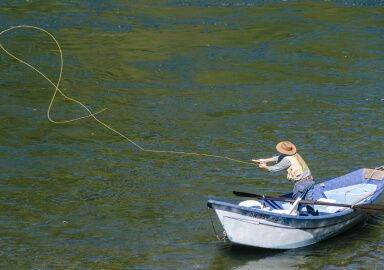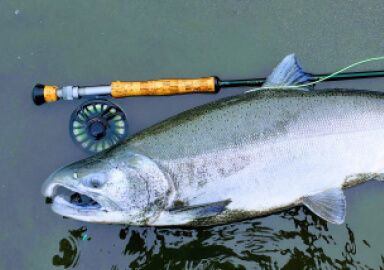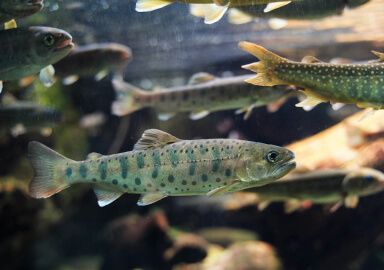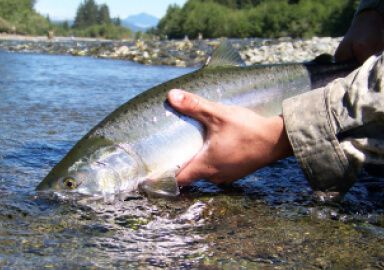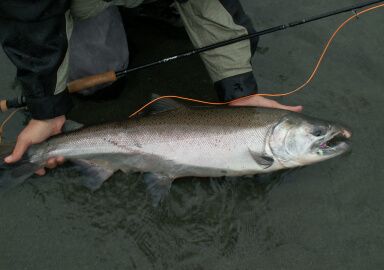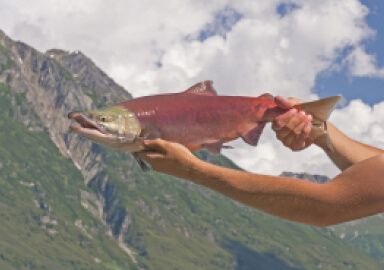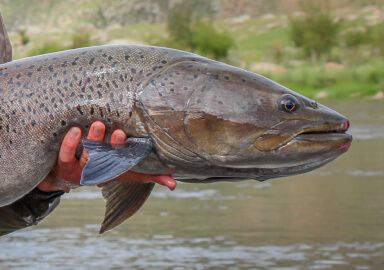Chinook Salmon
A big Chinook Salmon, also known as King Salmon, is a prize catch for any angler. The largest of all Pacific salmon, these fish leave the ocean to run up cold, coastal rivers in the spring and fall.
View 49 listings
49
listings
–
price starting from
7
countries
Where and When?
Chinook Salmon are native to the North Pacific Ocean and spawn in the river systems of western North America from northern Canada to Alaska, and Asian rivers from northern Japan to northeastern Siberia, especially on the Kamchatka Peninsula. Introduced populations of Chinooks thrive in the Great Lakes region, New Zealand, and Patagonia.
Chinooks are most often found in large streams or rivers. Many rivers have a spring run and a fall run of Chinooks. Spring-run Chinook (called “springers”) enter freshwater as early as March, but wait to spawn until mid-August through September. During this period, they hold in deep, cold water, conserving their energy for spawning. Fall Chinook Salmon enter rivers between September and late October and spawn soon afterward.
About Chinook Salmon
In its oceangoing phase, a Chinook has a silver body with a bluish green back covered with black spots, and black spots on both parts of the tail fin. In rivers, they become greenish brown or bronze. Chinook Salmon can be distinguished from Coho Salmon by their black gums and spots on the entire tail fin; the Coho Salmon have white gums and spots only on the top of the tail fin.The meat of the Chinook Salmon is delicious and very nutritious. Most Chinook Salmon average between 10 and 40 pounds, but the sport-caught record, from Alaska’s Kenai River, was 97.25 pounds!
How to Catch?
Chinook anglers use a variety of techniques. Chinook Salmon do not feed when they are in fresh water, but they are aggressive and can be enticed to strike a variety of lures and bait. Using scented and colorful baits increases the likelihood of a bite. When fishing from a boat, drifting, trolling, and anchoring to plunk bait or bounce jigs can work, depending on the situation. Bank fishing can be good for spring-run Chinook, which often conserve energy by staying closer to the shore. Chinooks are usually found near the bottom, especially in the spring. When fly fishing for chinook salmon, anglers often use large, colorful, weighted flies with flash, and because these fish are large, 9- to 10-weight rods and reels with disk drags are called for, as landing a big King Salmon on a fly rod can sometimes take more than an hour!





